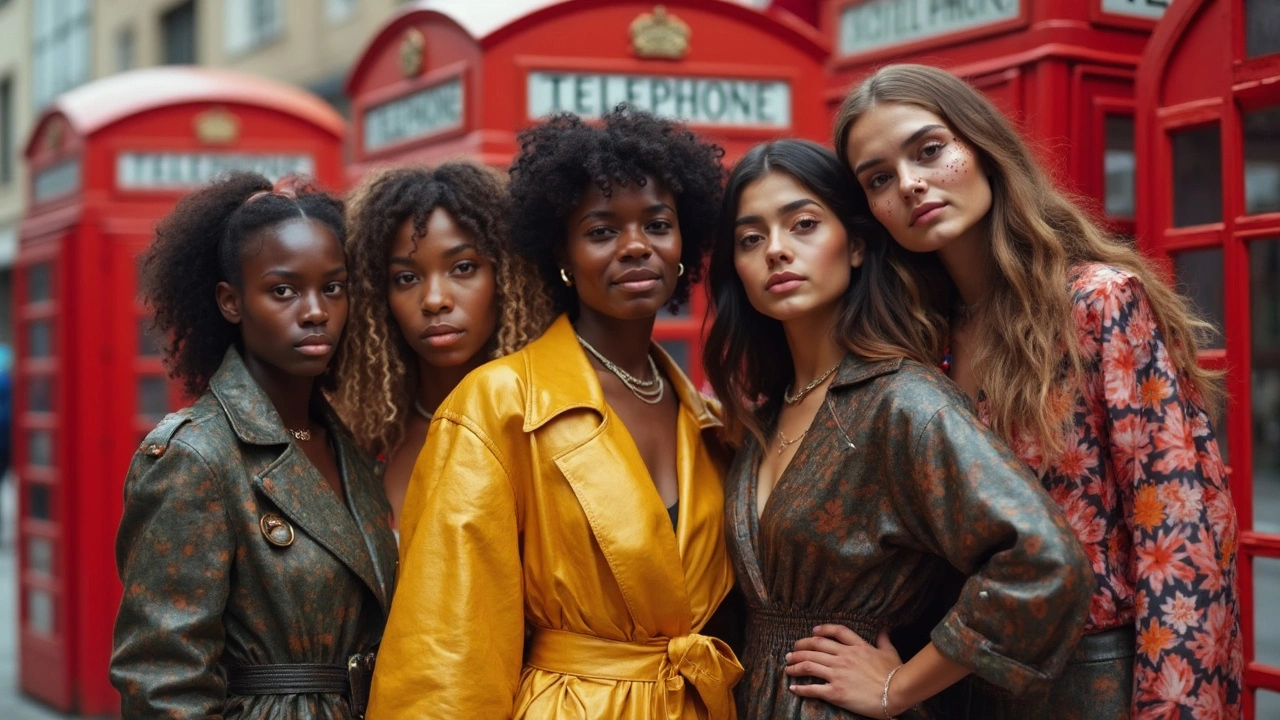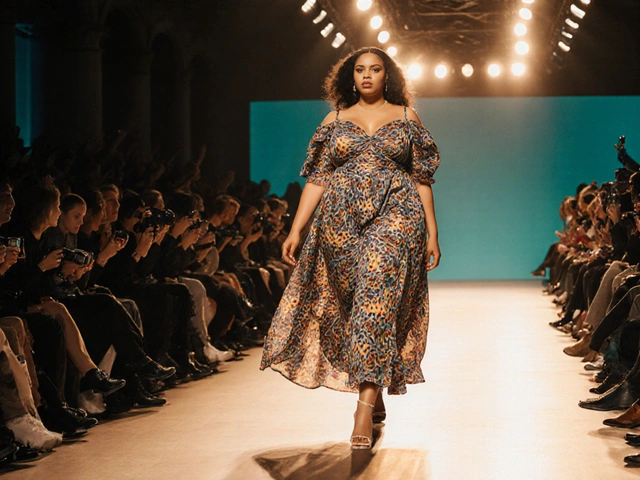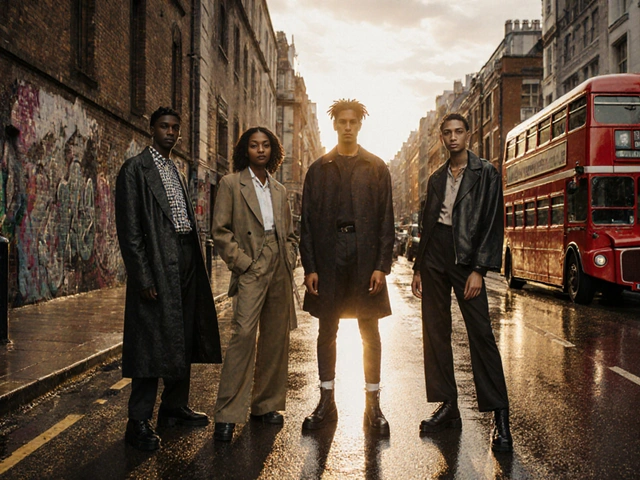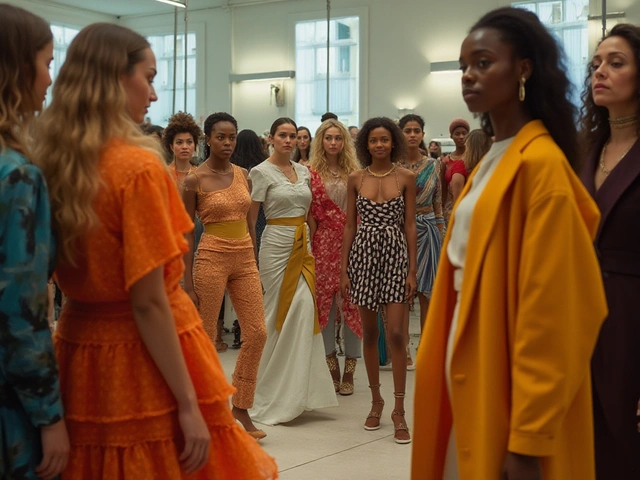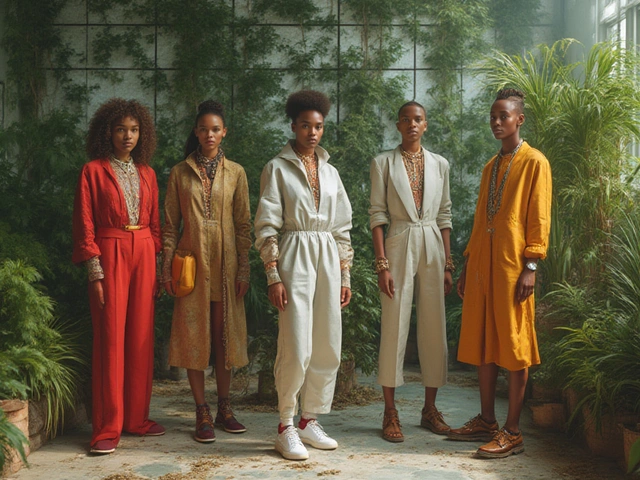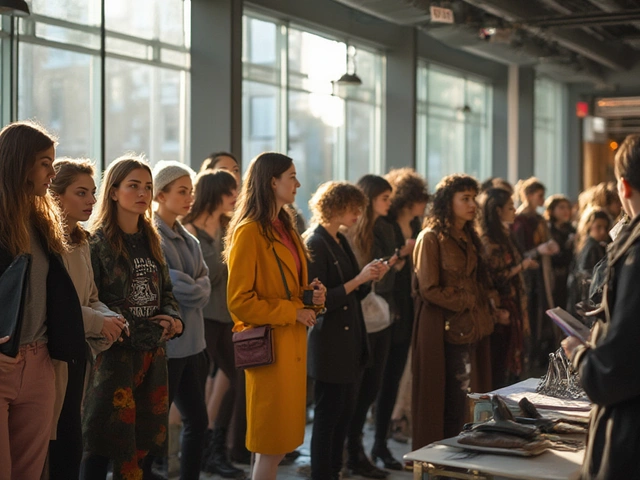If you think modeling in the UK has always meant tall, stick-thin girls and perfect cheekbones, brace yourself. The fashion industry here is buzzing with change, and UK models are rewriting the rules right before our eyes. British modeling isn't just about looking good—it's about breaking stereotypes, celebrating quirks, and creating trends that ripple far beyond London Fashion Week. From the bustling streets of Manchester to the creative corners of Glasgow, the next wave of models isn't waiting for permission—they're taking space, owning their identities, and forcing the industry to catch up.
How UK Models Are Challenging Traditions
The UK once looked to Paris or Milan for fashion inspiration, but now the tables have turned. The British scene is vibrant because it embraces what makes people unique. This isn’t some glossy marketing copy—just look at Adwoa Aboah. Born in London, she’s one of the faces redefining what a British model can be: mixed-race, outspoken about mental health, sporting a shaved head when she feels like it. Did you know Aboah almost gave up modeling after struggling with addiction, only to return stronger and launch Gurls Talk—a community for young women to discuss mental health? This blend of personal story and big-picture advocacy is everywhere.
But it’s not just about one or two famous faces. A new generation is coming up through social media channels, finding gigs without ever signing with a traditional agency. Think TikTok star Wisdom Kaye or Ellie Goldstein, who booked a Gucci campaign and modelled for Vogue with Down syndrome. Agencies now scout talent on Instagram, scouting for personality and passion just as much as they look for the right 'look'. It’s not uncommon for models to have day jobs, political opinions, and activist causes they share openly—what used to get them shunned off runways is now their ticket in.
Fashion experts have pointed out that the UK's knack for 'street casting'—roughly, finding ordinary people with striking presence—is giving fashion shoots and catwalks an authenticity that glossy campaigns used to lack. Some of the best stylists in London head to Camden or Shoreditch, searching for individuality instead of textbook measurements. This has led to brands like Burberry hiring an incredibly diverse set of models for their shows, including people of different sizes, ages, and backgrounds. Just five years ago, seeing a plus-size or nonbinary model on a British catwalk was rare. Now, it’s considered an important highlight in Fashion Week coverage.
| Year | % non-white models LFW | % Plus-size models LFW |
|---|---|---|
| 2018 | African 13% | 1.2% |
| 2021 | 19% | 4.8% |
| 2024 | 22% | 7.1% |
Those numbers are rising fast, but ask anyone close to the industry and they'll tell you: the real gamechanger is attitude. British models care less about perfection and more about authenticity. They reject airbrushing that slims waists or erases scars. Take Rain Dove, the gender-nonconforming model who's shot for Vogue and Calvin Klein. They've spoken about growing up bullied for how they looked, only to later use those same features to reclaim and expand the definition of beauty. In a world full of curated feeds, people crave something real—and talented UK models are more than happy to bring that attitude to the forefront of every photoshoot.
Key Figures Redefining the UK Fashion Scene
If you’re searching for inspiration, look to the women and men making headlines and quietly changing fashion’s DNA. Naomi Campbell might be a household name and one of the world’s 'original supermodels', but what makes her relevant now is her influence beyond the runway. She’s used her platform to champion African designers, and she’s famously unapologetic when calling out racism in fashion. Campbell’s decades-spanning career is proof you can age in modeling and still look—and act—like an icon.
Alejandra Alonso Rojas, a Spanish-British designer based in London, credits models like Munroe Bergdorf for helping her brand reach new audiences. Munroe, who’s openly transgender and fiercely vocal about equality, lost jobs because of her activism but refused to stay silent, eventually landing major campaigns and serving as a role model for gender-fluid youth across the country. People watching her story unfold realize you don’t have to fit the industry's mold to thrive; you set your own narrative.
Another name on everyone’s lips is Leomie Anderson. A former Victoria’s Secret Angel with South London roots, she founded LAPP—the Leomie Anderson the Project Purpose foundation—which focuses on women’s rights, health, and representation in fashion and media. Leomie’s candid interviews are full of practical wisdom for rookie models: be your own business manager, double-check contracts, and demand respect—or walk away. Her journey is a masterclass in self-advocacy.
Don’t forget Kwame Adusei, who’s become a menswear sensation despite pressure to tone down his Ghanaian roots. He’s told the British GQ about sneaking traditional prints into mainstream shows and proving that men’s fashion can be bold, playful, and unapologetically African. His approach is already inspiring younger models to celebrate their backgrounds rather than hide them.
The key takeaway? The UK scene is packed with real people refusing to shrink to fit someone else’s ideals. The more models speak out, support each other, and work behind the scenes (designing, producing, mentoring), the faster the fashion industry changes for the better.

The Evolution of British Agencies and Model Representation
Back in the nineties, British agencies worked on a 'look book' approach: finding tall white girls with sharp jaws, sending them to Paris, rinse and repeat. Now, the best agencies focus on what’s inside as much as what’s outside. Premier Model Management, founded by Carole White, switched up their strategy to embrace diversity before most other agencies caught on. Carole’s agency signed a wave of models from different backgrounds and even started a mentorship program for models facing bullying or isolation. Premier’s shift set a precedent other agencies have scrambled to match.
Nowadays, if you head to a casting call in London, you’ll see models of every background, body type, and age. Take the story of Bethany Templeton, who signed with Storm Model Management in her mid-40s after being spotted in Borough Market. She’s proof that there is demand for models representing all stages of life—something advertisers now appreciate because consumers want to see themselves reflected in ad campaigns.
And agencies are getting smart with tech. They use AI-driven tools to find talent on social media, but once someone is scouted, real people step in. Rookie models are encouraged to develop a personal brand online, keep contracts transparent, and set boundaries. Top agencies like Select and Models1 offer digital classes covering everything from basic fashion law to handling online trolls. This training is crucial because about 46% of UK models report facing cyberbullying, according to the British Fashion Council.
- Tip: budding models—keep your DMs professional and don’t trust every opportunity that comes your way. Scams are common, and good agencies never ask for up-front payments.
- Got a unique look? Proud of your story? Make your social posts about that! Realness beats polish every time these days.
- Always research an agency before you sign anything. Look for stories from other models online, and talk to a trusted mentor if you have one.
- If you’re under 18, bring a parent or reliable adult to meetings and shoots—industry regulations in the UK require it for your protection.
The **UK models** who thrive are the ones who treat fashion as a lifelong network, not a one-season job. They build real relationships, seek out diverse opportunities, and support each other. If you’re dreaming about a runway debut, check out the British Fashion Model Agents Association’s resources—they offer free advice and workshops for every stage of a modeling career.
| UK Modeling Agency | Founded | Notable Model Signed |
|---|---|---|
| Storm Model Management | 1987 | Kate Moss |
| Premier Model Management | 1981 | Naomi Campbell |
| Models1 | 1968 | David Gandy |
| Select Model Management | 1977 | Agyness Deyn |
Tips for Breaking Into the UK Fashion Industry
Thinking about modeling in Britain? You don’t need a crystal ball or a famous relative. Start by being visible online and in your local scene. Lots of fresh faces get discovered because they’re sharing something cool, honest, or just plain bold on social media. Post pictures that highlight what makes you interesting—quirky freckles, unusual fashion taste, big smile, or a story that’s uniquely yours. Recruit a friend to help you take some low-key but clear photos against plain backgrounds or out and about in your favorite spots.
If you’re considering going the agency route, always double-check that you’re contacting a legit company. The British Fashion Council keeps an official list of accredited agencies, and it’s easy to spot red flags (like agencies asking for upfront fees or sending contracts with weird legal jargon). If an offer feels off, don’t be afraid to walk away—it’s your image, your career, and you set the boundaries.
Network in person. Pop into open castings (often advertised on reputable agency websites) or attend local fashion events. Don't underestimate the power of a good word from a friend in the industry—they can point you towards honest agents and name-drop you to casting directors. There’s a real sense of community among UK models, and many are happy to show rookies the ropes if you’re respectful and enthusiastic.
Stay flexible and keep learning. Take free or low-cost classes in posing, movement, and even acting. The British Model Alliance offers webinars and workshops designed for beginners. Understanding how to move in front of the camera, or nail a quick change backstage, can help you stand out—no matter your look. Also, being punctual, polite, and prepared will get you asked back for future shoots.
Don’t compare yourself too closely to established names. Remember that every big UK model once worried nobody would give them a break. Jourdan Dunn, who was discovered while shopping for groceries, now advocates for more Black women in fashion. She talks about the power of lifting others up instead of aiming to be the only one in the room. This mindset helps the industry stay progressive and fun.
Last tip: think long-term. Build a digital portfolio and keep updating it. Stay healthy, support fellow models, and be ready to pivot—many successful UK models end up designing, acting, or launching their own businesses later on. Let your individuality be your secret weapon. The world doesn't need another copy-and-paste runway star; it needs you, flaws and all, ready to shake things up.
